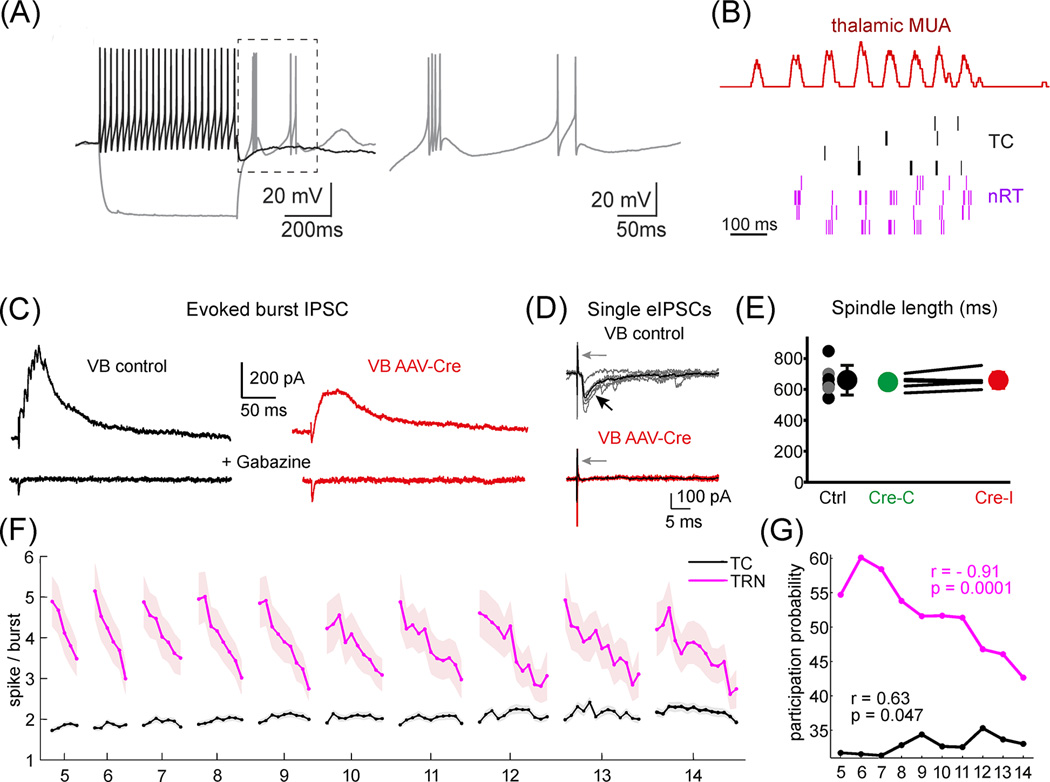Figure 2.
Heterogeneous scales of action by TRN. A) Tonic (black) and burst (gray) response of a TRN neuron to depolarizing and hyperpolarizing current step, respectively. B) Rhythmic burst activity of interconnected TC (black) and TRN (purple) cells during sleep spindles in freely sleeping animals. C) TRN bursts generate large, slow burst IPSC in TC cells in control condition in vitro (VB control, black). Substantial amount of this burst IPSC persists after the total removal synaptic GABA-A receptors (VB AAV-Cre, red) indicating that a significant portion of the inhibitory charge is carried via extrasynaptic receptors. D) However, during single spike TRN activity only synaptic receptors are activated resulting in an order of magnitude faster response. This indicates that changes in firing pattern alter the temporal scale of TRN action D) In the absence of synaptic inhibition, phasic extrasynaptic burst IPSCs is sufficient to pace normal spindle oscillations E) Cycle-by-cycle decrease in the number of spikes/TRN bursts during sleep spindles with variable duration (5–14 cycles). Change from burst to tonic IPSCs alter the temporal scale of action, resulting in a drop in the inhibitory which leads to termination of spindles F) Participation probability of TRN cells (purple) in the first cycle of the sleep spindles display a strong correlation with spindle length. This indicates that the duration of spindles is determined at the onset by the state of the network and this state is coded best by the activity level of TRN cells. Figures B,F,G from [51], C–E from [46]

